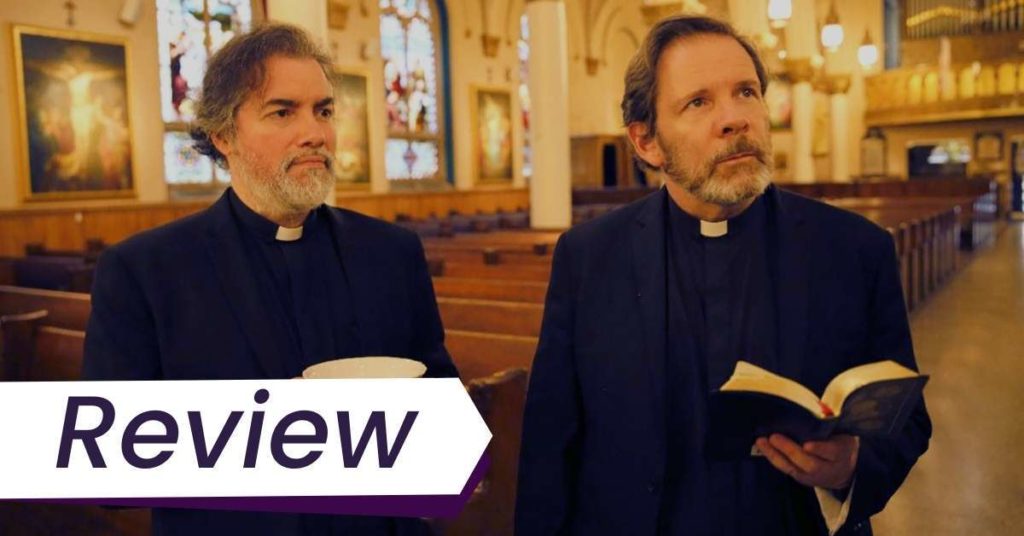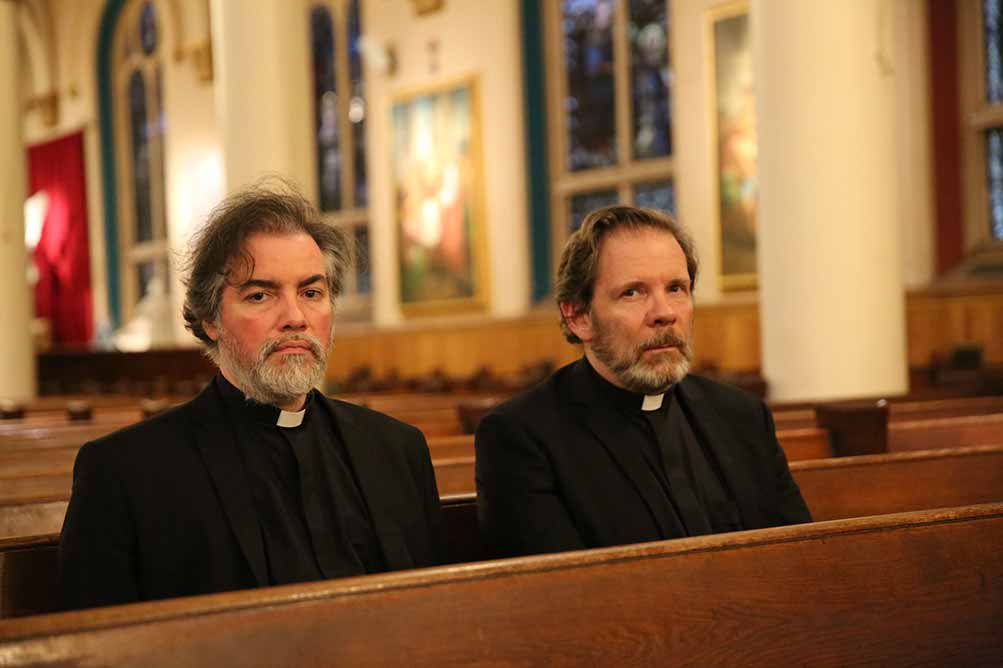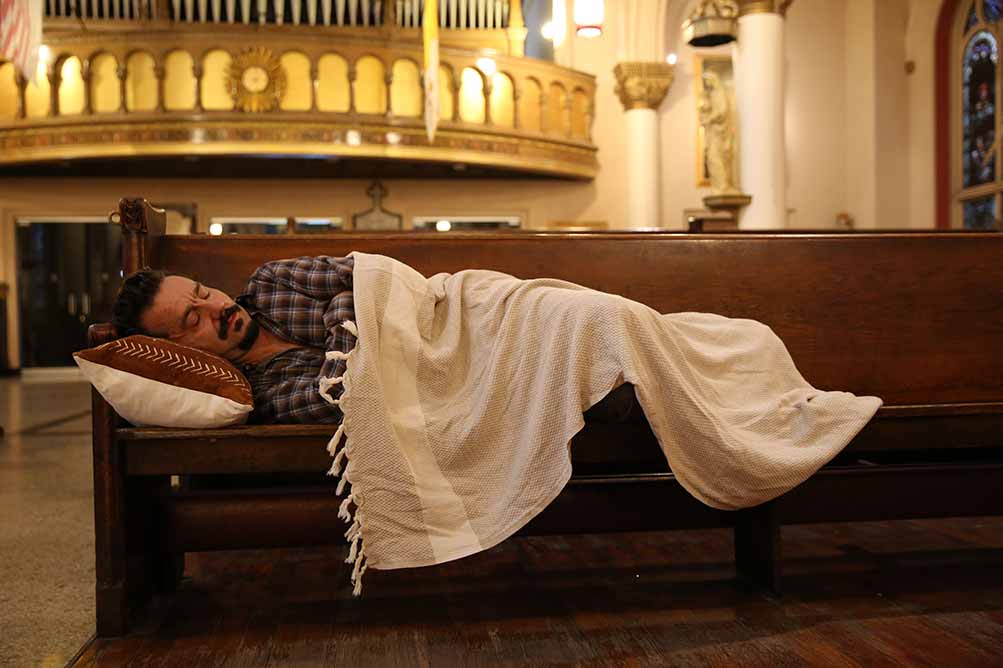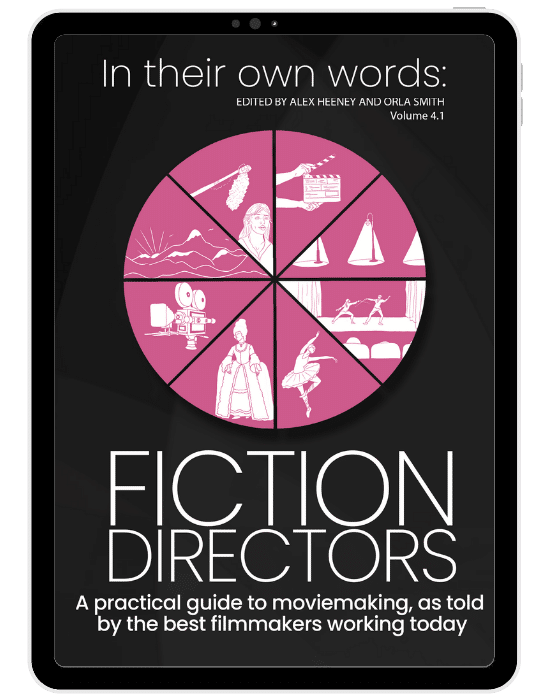In Scenes from an Empty Church, two NYC Catholic priests reckon with their faith in the face of a deadly pandemic. The film is now available in the US on VOD and digital platforms.

Discover one film you didn’t know you needed:
Not in the zeitgeist. Not pushed by streamers.
But still easy to find — and worth sitting with.
And a guide to help you do just that.
In retrospect, it’s no surprise that filmmaker Onur Tukel made a film about the pandemic while it’s still happening — just over a year after the world started to lock down. He has a tendency to jump on current events and make comedy about them; his 2017 film, The Misogynists, takes place on the night of Donald Trump’s election and world premiered just under a year after it’s set. His films, such as 2016’s Catfight, tend to be dry, dark comedies with engrossing back and forth between character actors.
Scenes from an Empty Church is no different. Kevin Corrigan and Thomas Jay Ryan play New York City Catholic priests, Father Andrew and Father James, waiting out the pandemic in a closed church. (They’re two of several great actors in the film whom many viewers may instinctively recognise but find hard to place.) While Catfight veered into outlandish slapstick, Scenes from an Empty Church is one of Tukel’s most subdued, dramatic films to date — although it’s not short on wit. The loose story is told through Father Andrew’s contemplative voiceover, conversations between the two priests and Father Andrew’s friend, Paul (Max Casella), and encounters with parishioners as the church slowly begins to open its doors.

As a church is a community hub that brings together a range of different people, focusing the story there allows the film to become a portrait of locked down New York City more broadly. As the priests converse with the people they let in to pray, we gain insight into each person’s life and how they’ve been affected by the pandemic, from nurses to criminals. There are even vignettes where we leave the church entirely and get a look inside the homes of characters other than the priest, such as when we follow Paul to his girlfriend’s apartment. Her character only shows up in this one scene, but in it, we get a look at her small, cosy living space — a very different lockdown experience from the cavernous church — and hear her nihilistic thoughts on where the world is going.
It’s also fascinating to focus on two priests living in a church — people whose lives are centred around devout faith — in a time of such chaos in the world, when most people’s faith has been shaken. How do you maintain faith in a benevolent God when people around you are dying every day, including those who dedicated their lives to serving that God?
The film begins in the wake of the death of a third priest who used to live at the church, whose death has severely shaken Father Andrew and particularly Father James. They grapple with this personal loss at the same time as the world is dealing with large-scale loss. The film is smart about how the pandemic has prompted many people to reflect on how they live their lives. While neither priest loses their faith completely, Father Andrew, who converted from Judaism to Catholicism, begins to question his motivations for joining the church. Father James decides to be truthful about secrets from his past. When life slows down, it leaves room for both men to look back on their lives and open up to each other.

The film’s engrossing, empathetic look at pandemic life is only dampened by its dubious outlook on social distancing and mask restrictions — it’s yet another piece of pandemic art that plays fast and loose with the science. On one hand, its depiction of characters breaking restrictions feels realistic, and is even played for comedy. When Paul first visits Father Andrew, he’s so insistent that he come inside the church and take off his mask that Father Andrew eventually caves, just to get him to shut up. Over the course of the film, which takes place over several months, we see the previously extremely health-conscious Father James — who obsessively cleans surfaces and demands restrictions be maintained — gradually ease up. Eventually, he’s happy not to wear a mask when he’s having a conversation with someone from outside the church. In these cases, it feels like Tukel is staying true to the way a lot of people have acted during this pandemic while still taking a wryly critical eye to this behaviour.
However, seemingly in an attempt to reach for an optimistic ending, the film ends up slipping and falling into anti-masker territory. Toward the end of the film, at an extremely-not-socially-distanced gathering full of grinning, dancing people, Father Andrew’s voiceover muses, “We need to occupy the same space.” It’s a lovely sentiment that reflects the realisation we’ve all had over the past year: that human contact is important, and when we get it back, we should treasure it. But the pandemic isn’t over yet — not now, and not when the film is set. Because of that, this ending feels like inorganically forcing optimism onto a still dire situation. We’re not out of the woods yet.
You could be missing out on opportunities to watch great films like Onur Tukel’s Scenes from an Empty Church at virtual cinemas, VOD, and festivals.
Subscribe to the Seventh Row newsletter to stay in the know.
Subscribers to our newsletter get an email every Friday which details great new streaming options in Canada, the US, and the UK.
Click here to subscribe to the Seventh Row newsletter.

Discover how the best filmmakers working today approach filmmaking
A practical guide to moviemaking, as told by the best filmmakers working today.

